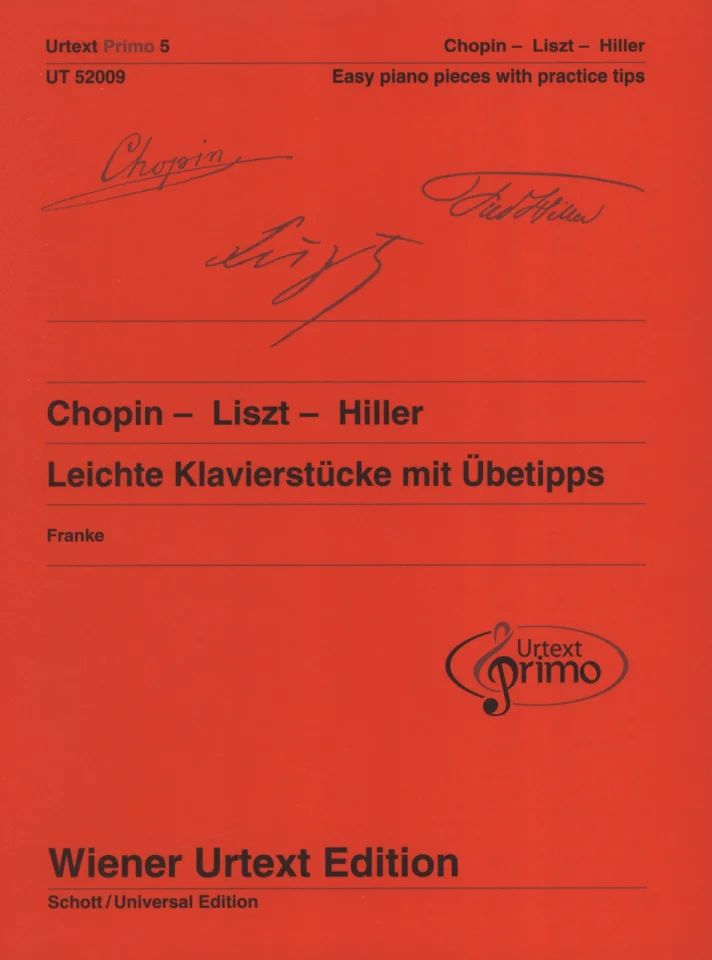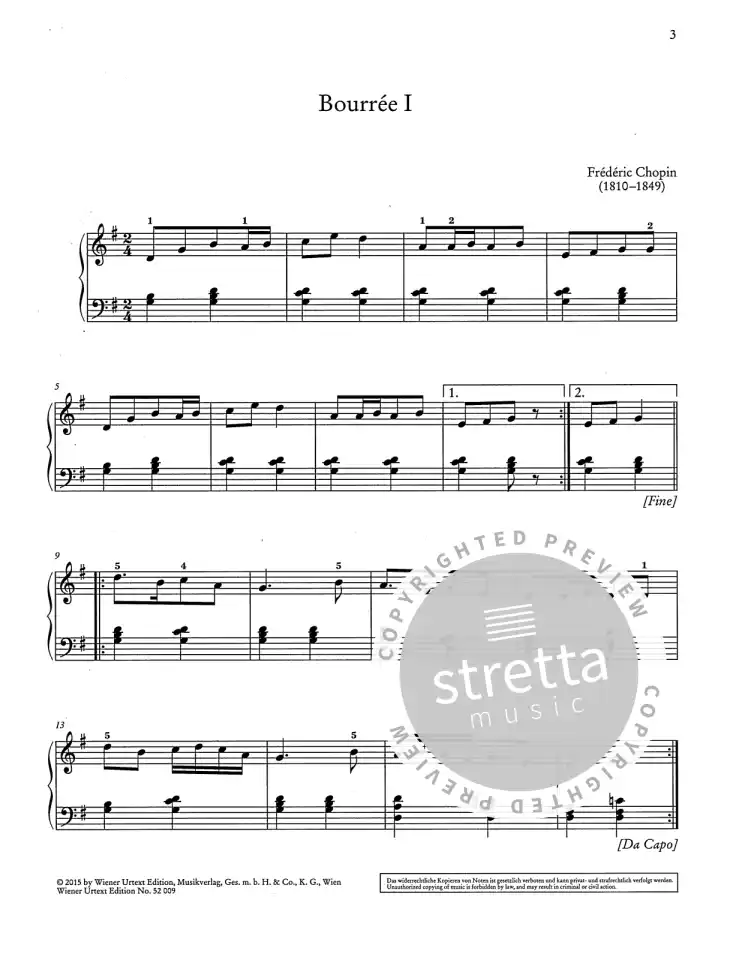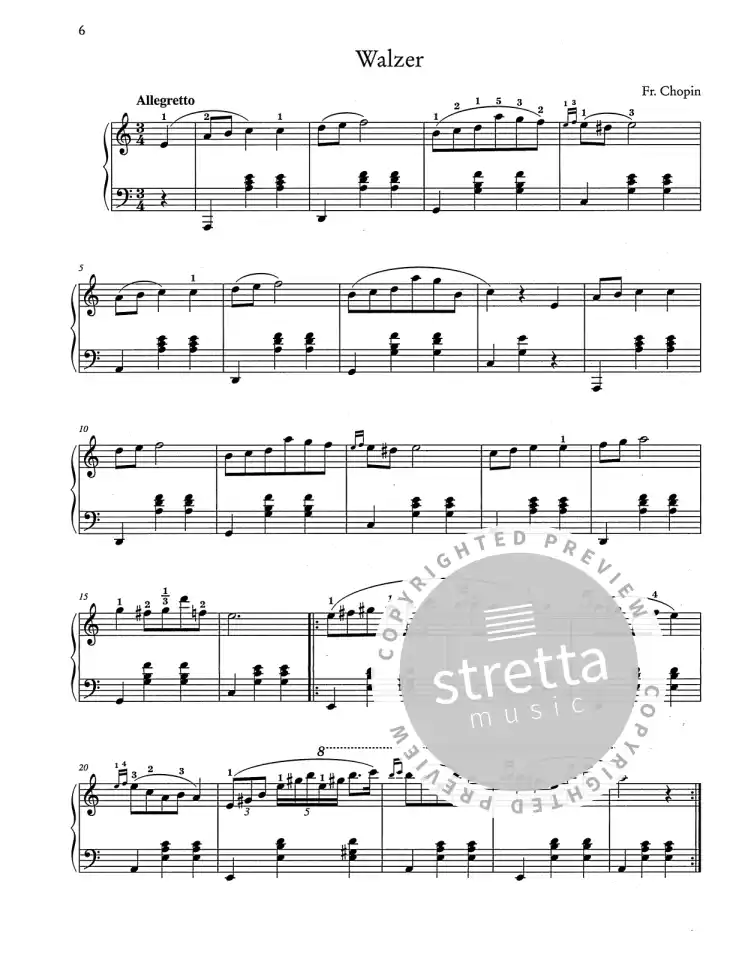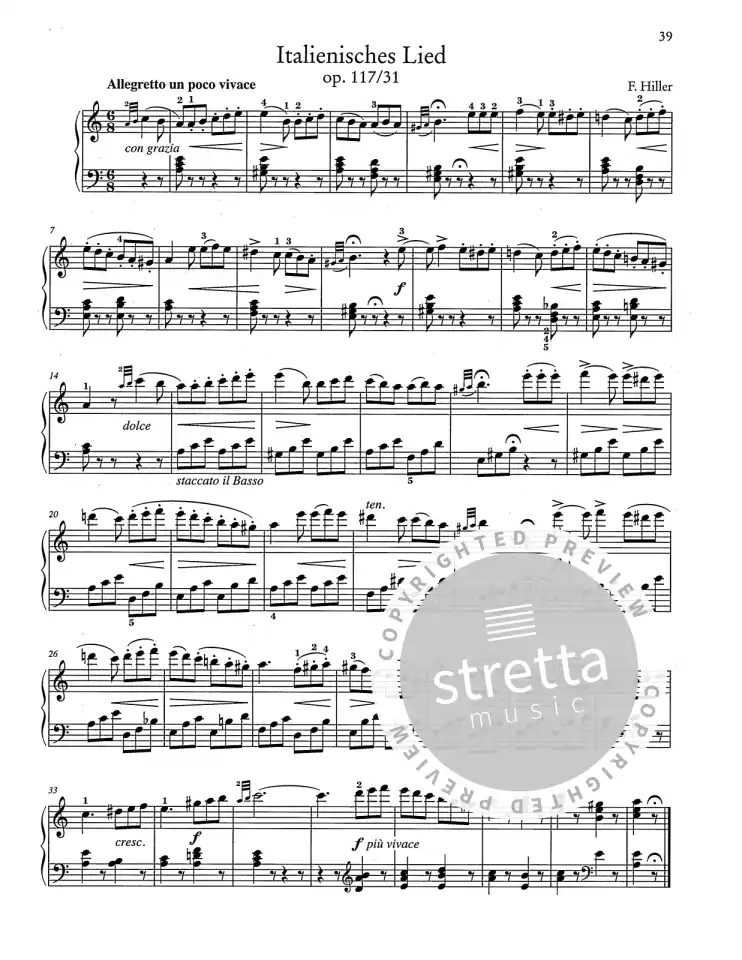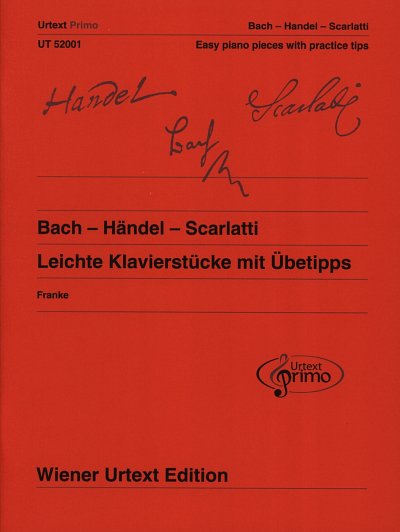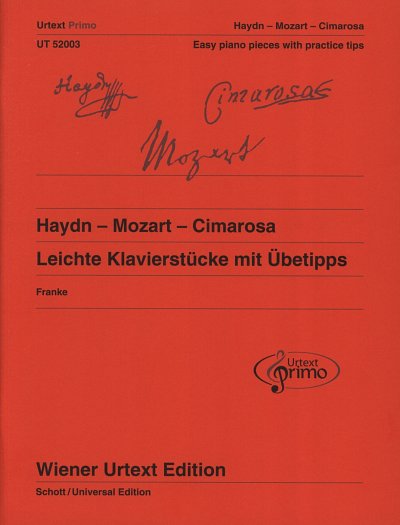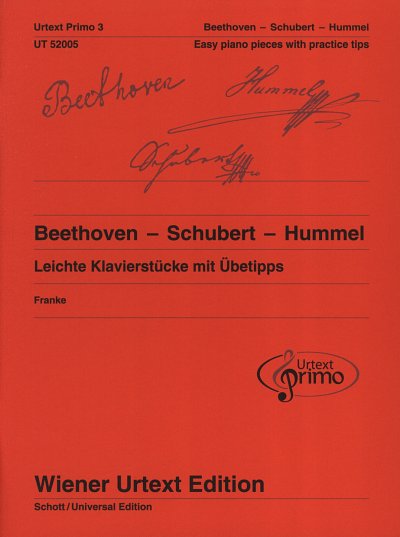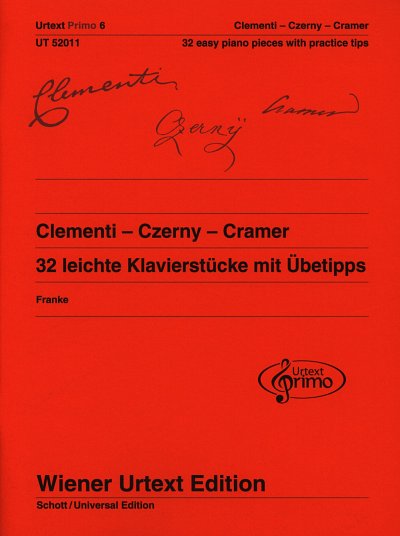With the new Urtext Primo series, Wiener Urtext Edition intends to bridge the gap between studying a piano method and taking additional lessons. Beginning with a performance level which is outlined by pieces such as Bach's Minuet in G (BWV Anh. 116), Mozart's Minuet in F (KV 5) or Schumann's Wilder Reiter (Op. 68/8), works by three different composers are selected for each volume in the series, with the aim of offering piano pupils (or even adults who want to resume piano playing) a wide range of repertoire pieces on the basis of which they can enhance their technical and musical skills.
The pieces' range of levels of difficulty is relatively narrow so that the volume can be used continuously over a period of about two years. This is what distinguishes the Urtext Primo approach from almost all common anthologies. The selected repertoire takes into account not only pieces of the classic canon of lessons, but also lesser known works which are in no way of less importance for piano lessons.
The Urtext Primo volumes are published in the internationally recognised standard of the Wiener Urtext editions. The explanations included in each volume shall help to deepen the knowledge of musical styles, music history and piano playing. A repertoire chart at the end of each volume gives a rough overview of the levels of difficulty of the selected pieces.
This volume presents easy pieces for piano by great virtuosos. It unites the two greatest, and perhaps best-known, pianists of the 19th century, Frédéric Chopin and Franz Liszt. The technical requirements of these works are very moderate without muting the stylistic characteristics of these two composers. The ability to play an original composition by Liszt in the first years of lessons can be very motivating for the piano student. Also featured in this collection are works by the virtuoso Ferdinand Hiller, to whom Robert Schumann dedicated his Piano Concerto. As in many of the works by Liszt and Chopin, Hiller's works are frequently reminiscent of folk music. His Irländisches Lied and Fandango, included in the collection, are fine examples of 19th-century 'world music'.
